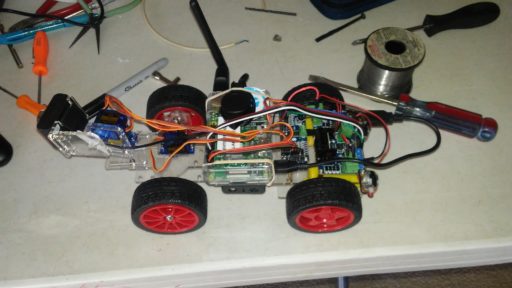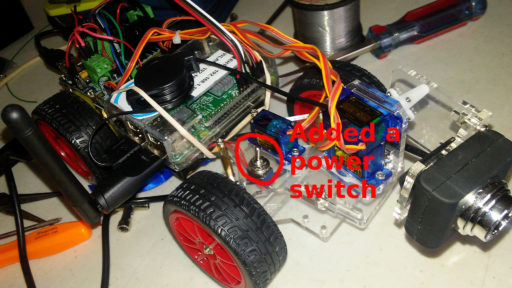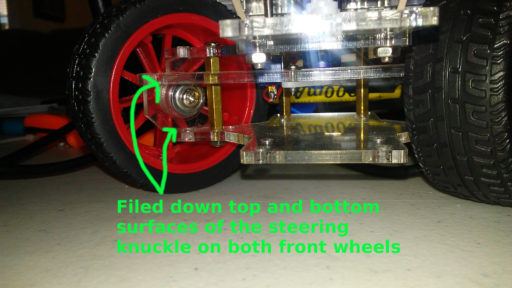This Christmas, Isaac asked for a robot car. We’d talked about giving him opportunities to begin experimenting with programming, and this seemed like a reasonable way to go. Being the cheap guy I am, I trolled Amazon for the robot car that came with the most features for the least amount of money, knowing full well that it would probably be some cheap Chinese knockoff. After looking at a wide range of offerings, I decided on a car marketed by Sunfounder knowing the instructions were probably crap, but confident in my ability to make it work without them.
Christmas day, Isaac and I sat down at the kitchen counter and went to work. The kit assembled easily enough, but there were a few hiccups.
- The paper backing on the plastic is hard to get off. I ended up sticking each of the parts to a piece of super-sticky duct-tape and tearing the tape off in order to get the backing off. There is probably an easier way, but I didn’t bother looking for it.
- The plastic pieces that the front (steering) wheels screw into (the steering knuckle if it were a real car) is slightly too big. If you tighten the screws all the way, the steering binds up. I ended up filing down the top and bottom edges to open up some slack.
- There were a few missing screws.
- There is no power switch. As soon as the batteries are installed, the entire car is powered up. I didn’t like that approach, so I installed a small toggle switch I had in the workshop on the positive (red) wire between the battery pack and the power regulator board.
- There isn’t a way to cleanly shut down the pi unless you log in remotely and shut it down that way. I’ll eventually add a pushbutton and write a code snippet to use that to trigger a soft shutdown on the pi — but that’s for later.



Otherwise, the hardware went together pretty well. The design calls for screwing the Pi down on the chassis, but we opted to put the pi in a case, and used a rubber-band to hold it on the chassis. We didn’t want to dedicate the Pi solely to the car.